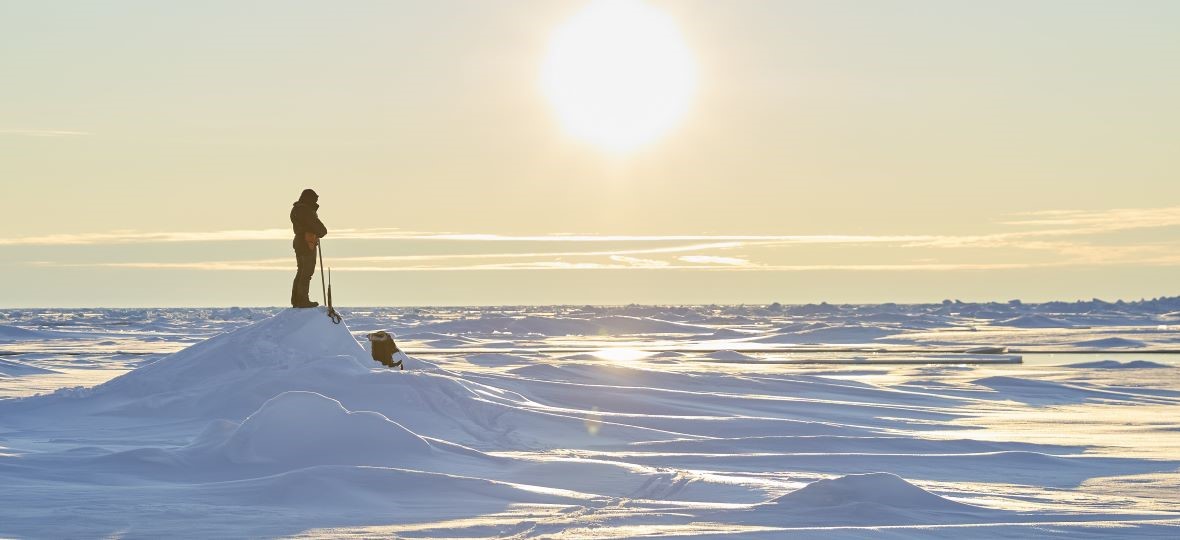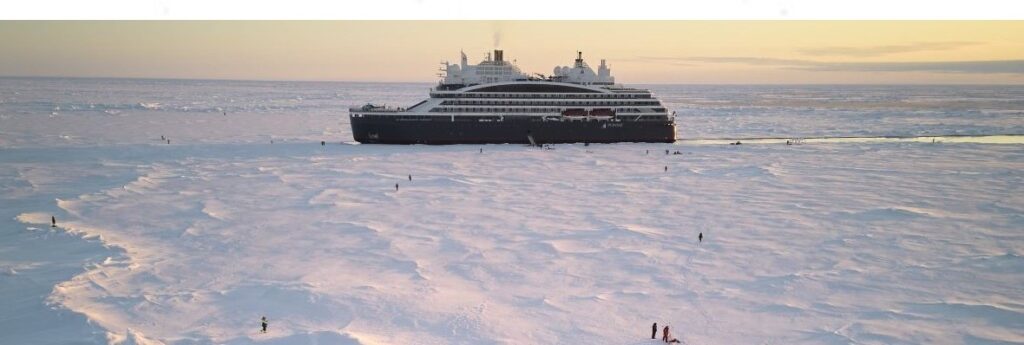PONANT’s groundbreaking polar expedition vessel, Le Commandant Charcot, etched its name in the annals of exploration on Sept. 12 by becoming the first vessel to reach the ‘North Pole of Inaccessibility’ – one of the most elusive and remote points on Earth. Located at the coordinates 85°48’ North, 176°09’ East, the North Pole of Inaccessibility is the farthest point in the Arctic Ocean from any land or accessible water, a place few dare to imagine reaching.
The significance of the moment resonated with all aboard, says PONANT, as the crew, guests, and an international team of 20 scientists gathered to commemorate a feat that many believed impossible. (In 1927, Hubert Wilkins flew over this Pole of Inaccessibility for the first time in a plane, but no-one had ever set foot on it.)
“Reaching the North Pole of Inaccessibility is a moment of rare intensity. Above all, it is a collective adventure, made possible thanks to PONANT’s passion and expertise,” said Captain Étienne Garcia.

North poleLe Commandant Charcot – specifically designed for polar expeditions – is the only vessel of its kind, equipped with a Polar Class 2 (PC2) hull, which enables her to navigate the most extreme conditions with minimal environmental impact. Powered by a cutting-edge hybrid electric engine and fueled by liquefied natural gas (LNG), the vessel exemplifies sustainable exploration in the modern age.
During her expedition from Nome, Alaska, to Longyearbyen, Spitsbergen, Le Commandant Charcot not only conquered the North Pole of Inaccessibility but also crossed two additional historic markers: the Magnetic North Pole and the Geographic North Pole on Sept. 15.
PONANT says its expedition not only opens a new frontier in polar exploration but also sets a precedent for future scientific endeavors. The team of international scientists onboard collected critical data from these uncharted waters, furthering our understanding of this remote region’s ecosystems and climate.
If you enjoyed or found this story useful, we’d appreciate if you would forward it to a colleague or friend who may also enjoy it. If, on the other hand, a friend shared it with you, welcome! You can get all the latest travel news and reviews from Travel Industry by simply clicking HERE.

